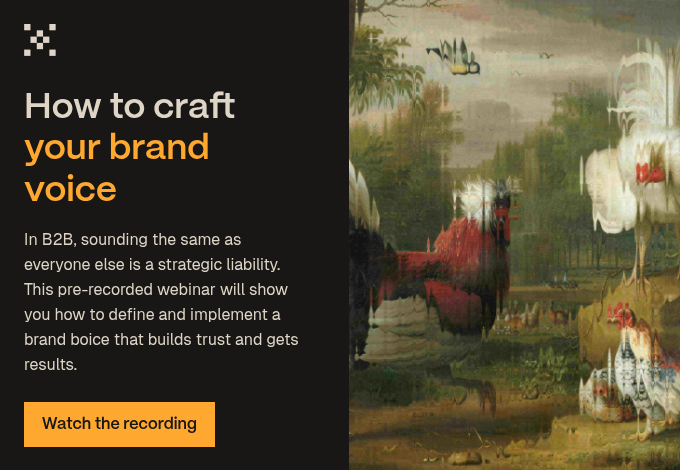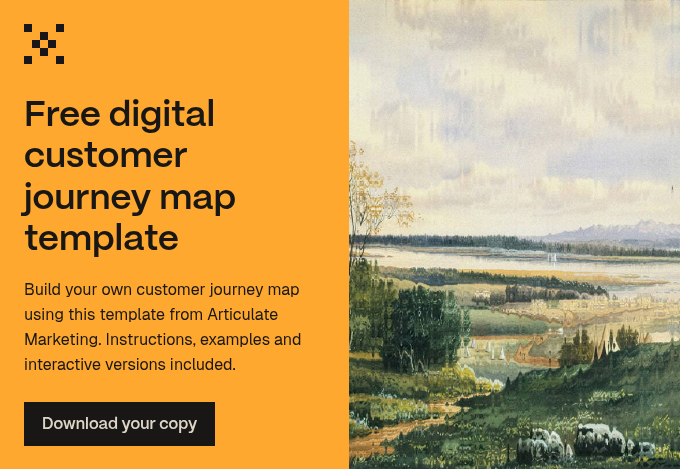Products are made in the factory, but brands are created in the mind. - Branding pioneer Walter Landor.
The physical value of your products may be easy to calculate, but your consumers' perceptions are what really determine the value your brand and products have in the marketplace.
Because of this, your ability to build value into your brand and communicate that value to customers through your marketing is essential to the long term success of your company.
The benefits of building a good brand
Brand equity is the perception customers have of your products and services based on what they think of your brand. Apple, Google and Microsoft are all considered to have high brand equity.
It’s difficult to assign a monetary value to a brand, but no matter how intangible brand equity may seem, a strong brand reaps considerable business benefits from:
- Awareness
- Credibility
- Reputation
- Customer satisfaction
Those benefits serve as tools to marketers in the effort to attract that mindful consumer who wants to buy from a brand high in value.
The mindful consumer
In his TED talk, 'The post-crisis consumer', John Gerzema asserts that buyers are no longer in retreat (as they were during the economic crisis), but have become what he refers to as mindful consumers.
The mindful consumer is willing to buy, but craves value. In the search for value, they consider factors like:
- Research. Sixty seven percent of the buyer’s journey is completed digitally meaning the mindful consumer wants and has a lot of information on their side about which companies have what they want.
- Social proof. Having a great product isn’t enough. The mindful consumer looks to online reviews, peer recommendations and social media profiles for evidence of a well-liked product.
- Identity and preference. Customers are mindful of a relationship between their purchase decisions and their identity. They are looking to make a purchase decision which suits their personal brand.
These factors all play a part in a purchase decision and all are about more than just the product. At the core of their search, customers are looking to form a bond with a brand they perceive as high in value.
7 ways to communicate brand value
If ‘brands are created in the mind,’ it’s vital to understand how to market your company to positively so as to affect the perception leads and customers have of your brand.
1. Work from the inside out
‘The world is full of boring stuff – brown cows – which is why so few people pay attention,’ Seth Godin writes. ‘Remarkable marketing is the art of building things worth noticing right into your product or service.’
To be perceived as valuable, your brand has to stand out from the herd -be a purple cow. A strong brand is about superlatives: the best customer service, most innovative, the happiest employees.
If you want to build a strong brand, marketing can’t be limited to one department. All areas have to demonstrate value to the customer. The customer experience is the foundation from which you build the rest of your marketing strategy to strengthen your brand.
2. Target your brand message
‘You have to find a group who really desperately cares about what you have to say,’ according to Seth Godin in his TED talk How to get your ideas to spread. Godin asserts that building value means finding the crowd that would find your brand and products valuable in the first place, rather than just casting a wide net. This means:
- Find the marketing channels your ideal audience is on
- Tailor your brand message to that marketing channel
In the 2014 World Cup, Nike and Adidas, who share a target audience, each created a campaign. While Adidas went for the ‘win or lose’ sentiment, Nike appealed strictly to football fans with inside jokes only enthusiasts who follow the sport would understand. Nike’s message was stronger-more valuable-because it was more specific to its audience.
3. Use a consistent tone of voice (ToV)
‘Brand consistency’ is so important that it’s become a defined phrase in the world of marketing. The more often your organisation’s personality is presented to potential customers, the more likely they are to remember you. Ensuring that your output shares the same language, tone and opinions removes any confusion, allowing your audience to form easy associations with your content.
A formalised set of ToV guidelines will provide the scaffolding within which all future content can be created, aligning every blog, social post and email to guarantee that you’re speaking with one voice.
4. Maintain high standards for design
Design is visual communication. How you use colour, shapes and font or organise elements on a website page, email campaign or even a product package will dictate whether or not your brand is perceived as valuable.
How you package your brand affects how your brand is perceived and interpreted. A ‘strong visual branding system’ can make a small company seem more powerful or demonstrate a large company’s strength. Bad design has the adverse effect - just watch this insightful spoof.
5. Give your brand meaning
In the same way beauty is in the eye of the beholder, all value is perceived value. To give meaning to your brand:
- Make it a status symbol. In Rory Sutherland’s TED talk, he tells the story of a king who, to prevent famine, decreed the potato a royal crop and put guards around the fields to make the previously rejected vegetable desirable. The king changed the perception of the crop's worth, not the crop itself. He advises that 'anything worth guarding must be worth stealing.' You may not be able to decree your products or brand a ‘royal crop,’ but you can strive to create the same kind of perception of your product.
- Make it symbolic. In the same talk, Sutherland notes that during a war, the wealthy in Prussia were encouraged to give their jewellery to support the war effort. The pieces were replaced with replicas made out of cast iron. Though they carried decidedly less intrinsic value, the pieces came to have great symbolic value to the people of Prussia because of the sacrifice they represented and became desirable during that time period. A modern example would be TOMS shoes. Their business model, built on symbolic value of a TOMs purchase, enabled them to grow into an international brand with several product lines.

- Connect to emotions. According to Nielsen’s VP, ‘emotional preference is important: while services may be similar, that emotional connection can create the perception that the “connected” brand exceeds customer expectations.’ It means presenting a product, no matter its function, in an empathetic way. Google Chrome achieved this in their Dear Sophie ad. Email is a straightforward product. However, Google used the message to connect with customers on an emotional level.
6. Provide thought leadership and valuable information in your content
Content is a prime way to communicate your brand’s value and continuously increase its strength. Content can demonstrate thought leadership to your audience, helping to build trust, as well as delight customers into becoming loyal brand advocates.
Content that adds value to your brand must be about quality for your audience, not quantity for your company. So, how do you keep your content focused on adding value for the customer?
- Buyer personas. These semi-fictional profiles representing your ideal buyers should include details of your customers' interests, concerns, pain points and other details to guide the creation of content.
- Buyer stories. Again, to create brand equity, the buyers have to realise the value. So content can’t correlate to your marketing goals. It must correspond to the content leads and customers are looking for.
- Plain language. The language you use in the conference room is not appropriate for content if you expect to add value for the buyer. The writing in your content needs to cater to the audience to whom you are speaking.
7. Build loyalty
Tailored content is the start of a long term relationship. If you continually produce content that interests leads and customers, you can keep them coming back to your brand and build loyalty.
- Content on social media is a way to delight customers and put them back into the sales funnel for future purchases. Learn what channels your customers are on and the type of content they want to see and then put consistent, tailored content on those channels.

- Map email campaigns according to what products customers are interested in or where they are in the sales funnel. The more tailored and personalised the content, the greater the value of the email to the customer.
Customers are your best allies when it comes to strengthening a brand. In a connected world where perception determines your brand’s value, having customers on your side gets you the recommendations, reviews and social proof you need.
Strengthen your brand and evolve your marketing strategy
In the end, brand value comes down to distinction: your ability to set your brand apart in the industry. You have to be able to tell a better story and it has to be consistent across all marketing channels to remain strong. To find out more about how to take a great brand and get people talking about it, check out this massive brand awareness guide by Typeform.
Once you’ve built value into your brand from the product to the campaigns, it’s important to understand where your brand falls on the value scale and to continually adapt your marketing strategy to suit.
Everyone in the company is responsible for developing a strong brand. However, it is your responsibility as a marketer to communicate that value to the mindful consumer who goes in search of a strong, high value brand they want to be a part of.
[This content was updated in September 2019]
.jpg?width=1600&height=800&name=europeana-DfBSs2SSNwQ-unsplash%20(1).jpg)





